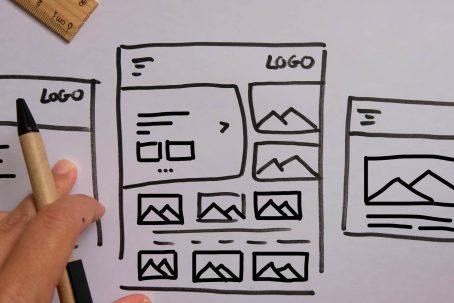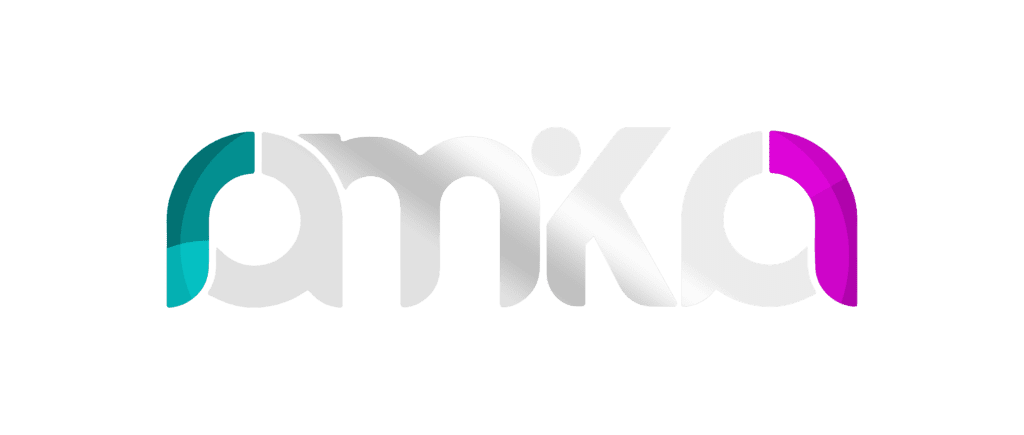Website design requirements checklist for client (Comprehensive)

Category:Uncategorized
Publish Date: 2023-12-14 16:44:57
In an era where the digital landscape is in constant flux, the significance of a well-crafted website cannot be overstated. It stands as the linchpin of online success, a virtual storefront that not only captivates visitors but also seamlessly navigates them through a curated user experience. This process of website design is nothing short of an art, a nuanced dance between aesthetics and functionality. It’s a journey of Website design evaluation checklist where every pixel, every line of code, contributes to a symphony of visual allure and seamless operation.
As we embark on this exploration, we invite you to journey with us into the intricate world of website design evaluation and website design requirements checklist. Beyond the surface, beyond the pixels and code, lies a meticulous checklist that underpins the success of any digital endeavor. This guide serves as a compass through the intricacies of this web design checklist for client, unraveling the secrets to creating a digital presence that not only exists but flourishes.
If you don’t have a website, you can use our affordable website design services in Vancouver.





[elementor-template id=”19628″]
Key Elements of Website Design
Before delving into the specifics, let’s set the stage by outlining the foundational elements that weave together the digital tapestry of an effective website design. It’s a delicate interplay between aesthetics, functionality, and user experience that forges the identity of a website amid the vast expanse of the digital arena. In a proper Website design evaluation checklist, Imagine a website as a living entity, with aesthetics, functionality, and user experience serving as its lifeblood. A harmonious blend of these elements is the key to creating a website that not only attracts attention but also keeps visitors engaged. Just as a well-balanced meal delights the senses, a well-balanced website design captivates users from the moment they land on the homepage.
The Impact of Visual Appeal
In this virtual realm, first impressions are akin to a firm handshake or a warm greeting at a physical storefront. The visual aesthetics of a website wield the power to leave an indelible mark on visitors. From the carefully chosen color palette that resonates with brand identity to the selection of fonts that convey a sense of personality, each visual element is a brushstroke contributing to the overall canvas of user perception. Consider this, visitors decide within milliseconds whether to explore further or navigate away. Visual appeal becomes the silent ambassador, conveying trust, professionalism, and relevance. It’s not just about making things pretty; it’s about creating a visual narrative that resonates with the target audience, fostering a positive emotional response that transcends the digital divide. We suggest you also read this article: Types of e commerce sitesContent Organization and Readability
In the digital kingdom, content reigns supreme, yet its monarchy is only as robust as its presentation. The marriage of compelling content and an artful layout is where the magic happens. Imagine your website as a well-organized library, inviting users to explore its volumes effortlessly. Let’s delve into the subtleties of content organization and readability that transform mere words into a captivating narrative.An Organized Layout
Picture your website as a well-arranged bookshelf where each section has a purpose, and every page contributes to a cohesive story. An organized layout isn’t just about aesthetics; it’s a roadmap that guides users through their digital odyssey. It involves strategically placing content, intuitive menu structures, and a logical flow that ensures visitors find what they seek without the frustration of aimless wandering. In a good Website design evaluation checklist, consider a homepage that serves as a welcoming foyer, introducing visitors to key offerings. Subsequent pages unfold like chapters, each with a distinct purpose and interconnected with seamless navigation. This organizational finesse not only enhances user experience but also plays a pivotal role in search engine optimization, ensuring that search bots can effortlessly crawl and index your content.Intuitive Navigation
Navigation is the compass that guides users through the vast expanse of your digital landscape. Intuition is the keyword here – users should instinctively know where to click to access information. Implementing clear menu structures, strategic calls-to-action, and breadcrumbs aids in creating a user-friendly journey. As one of the most important website design requirements checklist parameters, consider incorporating a search feature for those on a specific quest and utilize well-designed menus that categorize content logically. A user, much like an explorer, should feel empowered to navigate your site with ease, discovering the hidden treasures of information you have to offer.Readable Font Styles
While content is the substance, typography is the art form that delivers it. Readable font styles are not just a matter of aesthetics; they are a crucial element of accessibility and user experience. Fonts should be legible across devices and screen sizes, ensuring that your message isn’t lost in a sea of confusing characters. Strive for a harmonious blend of style and readability. Consider factors such as font size, line spacing, and contrast against the background. The goal to have a good Website design evaluation checklist is for users to absorb your content effortlessly, without the strain of deciphering tiny text or grappling with overwhelming blocks of information. The web design checklist for clients advocates for a delicate equilibrium between rich, informative content and an organization that beckons exploration. As we continue, we’ll unravel the nuances of this balance, ensuring that your digital narrative is not just informative but also captivating. Our team also provides SEO services. So, if you want to earn from your site, we suggest you visit search Engine Optimization in Vancouver. [elementor-template id=”19601″]Load Time Optimization
In a world accustomed to instant gratification, the patience threshold for slow-loading websites is minimal. Load time optimization emerges as a silent hero, ensuring that your digital masterpiece loads swiftly, captivating users from the first click. Let’s explore the intricacies of load time optimization in Website design evaluation checklist and its profound impact on user experience and search engine rankings.
- Prioritize Efficient Coding
- Server Response Times
Cross-Browser Compatibility
In the vast expanse of the internet, users wield an array of digital vessels to explore websites. Cross-browser compatibility ensures that your website functions flawlessly, irrespective of the vessel chosen for the journey. The web design checklist for clients mandates that your website should be a universal digital sanctuary, welcoming visitors from Chrome, Firefox, Safari, Edge, and beyond. Achieving cross-browser compatibility involves rigorous testing across multiple browsers and versions, identifying and rectifying any anomalies that may disrupt the user experience. While cross-browser compatibility ensures a consistent experience, responsive design takes it a step further by adapting your website to different devices and screen sizes. The digital landscape is diverse, with users accessing websites on smartphones, tablets, laptops, and desktops. A responsive design ensures that your website not only fits the screen but also retains its functionality and visual appeal.Scalability and Future-Proofing
A website is not just a digital presence; it’s a long-term investment in your brand’s online legacy. Scalability and future-proofing are the architectural pillars of Website design evaluation checklist that ensure your digital foundation stands resilient against the winds of technological change and the surge of user traffic. Anticipating Growth: Picture your website as a thriving metropolis. Scalability involves building roads and infrastructure to accommodate the ever-increasing flow of visitors. Anticipate growth by choosing a hosting solution that can seamlessly scale with your traffic demands. Whether you’re expecting a gradual uptick or a sudden surge, your website should be prepared to handle the influx without compromising performance. Future-proofing, on the other hand of items of website design requirements checklist, is like planting seeds for tomorrow’s technology. It involves choosing frameworks and technologies that are adaptable to emerging trends. Suggested content: Difference between wordpress website and coding websiteSecurity Measures
In the ever-evolving digital landscape, security is not a luxury; it’s a necessity. The potential risks, from data breaches to cyber-attacks, underscore the importance of implementing robust security measures. Your website is not just a collection of pages; it’s a fortress, and the protection of user data is paramount. Encryption protocols, such as Transport Layer Security (TLS), create a secure tunnel for data transfer, shielding it from prying eyes. Secure Sockets Layer (SSL) certificates provide an additional layer of protection, ensuring that data exchanged between users and your site remains confidential. Regular security audits act as vigilant gatekeepers, identifying vulnerabilities before they can be exploited. As we navigate the digital realm, security measures become the unsung heroes, instilling confidence in users and fortifying the trust that forms the bedrock of online interactions.
SEO-Friendly Design Practices
In the vast labyrinth of the internet, search engine optimization (SEO) is the guiding thread that leads users to your digital doorstep. Incorporating SEO-friendly design practices is not just a checkbox on the website design requirements checklist; it’s the strategic compass that ensures your website is not lost in the digital wilderness. Strategic keyword placement, like well-placed signposts, guides search engines to the heart of your content. Optimized images are the visual cues that attract search engine attention. Search engine-friendly URLs act as navigational coordinates, making it easy for both users and search bots to find their way. A well-structured site architecture enhances crawlability, ensuring that search engines explore and index your content thoroughly. As we embark on this SEO journey, the goal is not just to be seen but to be prominently featured in the digital spotlight. If you recently got a site but did not SEO it, we suggest you read how to seo website step by step.
Usability Testing
Before the curtain rises on your digital stage, conduct a meticulous rehearsal through usability testing. It’s not just about functionality; it’s about sculpting an experience where users can navigate your site effortlessly. Usability testing is the dress rehearsal, identifying any hiccups in the user journey and ensuring a seamless performance on the digital stage. Imagine a user as the lead actor, navigating through scenes (webpages) with ease, guided by an intuitive script (navigation). Usability testing as a big part in website design requirements checklist identifies any stumbling blocks, ensuring that the user experience is not a drama of frustration but a smooth, enjoyable performance.Accessibility Standards
In the digital era, inclusivity is not just a virtue; it’s an imperative. Adhering to accessibility standards ensures that your digital doors are wide open to individuals of all abilities. Imagine your website as a public space, and accessibility features as ramps and elevators that make it universally accessible. Alt text for images becomes the descriptive guide in Website design evaluation checklist for those with visual impairments, and keyboard navigation becomes the tactile path for users who rely on assistive technologies. Adhering to accessibility standards isn’t just ethically sound; it expands your digital reach to a broader audience, fostering a sense of inclusivity in the vast digital landscape. To increase the sales of your site, we definitely suggest you read how to do online marketing.Legal Compliance
In the intricate tapestry of the digital world, navigating legal landscapes is not just advisable; it’s paramount. Evaluate your website’s compliance with data protection laws, intellectual property regulations, and other legal requirements. Consider this legal compliance as the guidebook that ensures a smooth journey through the complex legal terrain. Data protection laws, such as the General Data Protection Regulation (GDPR), require transparent communication about data usage and robust mechanisms for user consent. Intellectual property regulations guard against unauthorized use of content, trademarks, and proprietary information. Legal requirements weave a protective shield, ensuring your digital presence operates without legal hiccups.Responsive Customer Support Design
User satisfaction extends beyond the digital canvas to the realm of customer support. Implementing a responsive customer support design is akin to having a digital concierge, ready to assist users on their journey. Easily accessible contact forms, live chat options, and comprehensive FAQs become the pillars of this user-friendly support system. Imagine a user encountering a query or an issue, a responsive customer support design ensures that assistance is just a click away. Contact forms serve as the communication bridge, live chat options provide real-time guidance, and FAQs become the digital encyclopedia that addresses common queries.
Analyzing Competitor Websites: The Strategic Observatory
Competitors are not adversaries; they are strategic observers providing valuable insights. Analyzing competitor websites goes beyond mere curiosity; it’s a strategic reconnaissance mission to identify industry trends, innovative features, and potential gaps in your own design. Consider competitors as fellow travelers on the same digital highway. Benchmarking against them provides a comparative lens, revealing the terrain ahead. Are there innovative features that captivate users? Is there a gap in their design that you can fill with a unique offering? Competitor analysis becomes the compass that guides your strategic decisions, ensuring that your website is not just on par but at the forefront of industry benchmarks.Website design evaluation checklist table
Based on what you learn so far, you can customize this checklist based on the specific requirements and nuances of your website design evaluation process.| Aspect | Considerations |
| Introduction | Has the first impression effectively set the stage for the website? Does it highlight the nuanced process of crafting a captivating and functional website? |
| Key Elements of Website Design | Is there a harmonious blend of aesthetics, functionality, and user experience? Have foundational aspects been outlined effectively? |
| Visual Appeal | Does the website create positive first impressions? Is there alignment between color schemes, fonts, and brand identity? Does it evoke a positive emotional response? |
| Content Organization and Readability | Is content organized in a logical and intuitive manner? Does the layout enhance user engagement? Is the font style readable and appropriate for the content? |
| Load Time Optimization | Has efficient coding been prioritized? Are images appropriately compressed? Is the server response time optimized for swift loading? |
| Cross-Browser Compatibility | Does the website function seamlessly across various browsers? Is the user experience consistent regardless of the browser used? |
| Scalability and Future-Proofing | Is the website designed to accommodate growth? Will it integrate seamlessly with emerging technologies? Is the architecture future-proof? |
| Security Measures | Are robust security measures in place? Are encryption protocols and SSL certificates implemented? Are regular security audits conducted? |
| SEO-Friendly Design Practices | Is keyword placement strategic? Are images optimized for search engines? Does the site architecture enhance crawlability? |
| Usability Testing | Has thorough usability testing been conducted? Have usability issues been identified and rectified? Is the design user-centric? |
| Accessibility Standards | Does the website adhere to accessibility standards? Are features like alt text for images and keyboard navigation implemented? Is the website inclusive for all users? |
| Legal Compliance | Is the website compliant with data protection laws? Does it adhere to intellectual property regulations? Are other legal requirements met? |
| Responsive Customer Support Design | Are contact forms easily accessible? Is live chat available for real-time assistance? Are comprehensive FAQs provided for user guidance? |
| Analyzing Competitor Websites | Has competitor analysis been conducted? Are industry trends and innovative features identified? Have potential gaps in design been recognized? |
Conclusion
In conclusion, a meticulous evaluation of your website design is paramount for online success. The web design checklist for clients presented here serves as a comprehensive guide to elevate your digital presence. Regularly revisit and update your website design to stay ahead in the dynamic digital landscape. To fully leverage the benefits of a meticulously designed website and as important part of website design requirements checklist, consider incorporating marketing strategies of expert agencies. Ramikar Collection’s website design services align seamlessly with the principles outlined in the Website design evaluation checklist. By partnering with us, you ensure a holistic approach to digital success, where design meets functionality in perfect harmony.Recent Articles:

Video Marketing Canada: Best Strategies for 2025
8 months ago
5 min 25 sec read

Photography Services Canada: For Web & Social Media Use
8 months ago
5 min 2 sec read

Logo Design Canada: Create a Logo That Truly Stands Out
8 months ago
4 min 38 sec read
Let us help !
Related Posts
Comments
0
0
votes
Article Rating
Subscribe
Login
0 Comments
Oldest
Newest
Most Voted
Inline Feedbacks
View all comments






